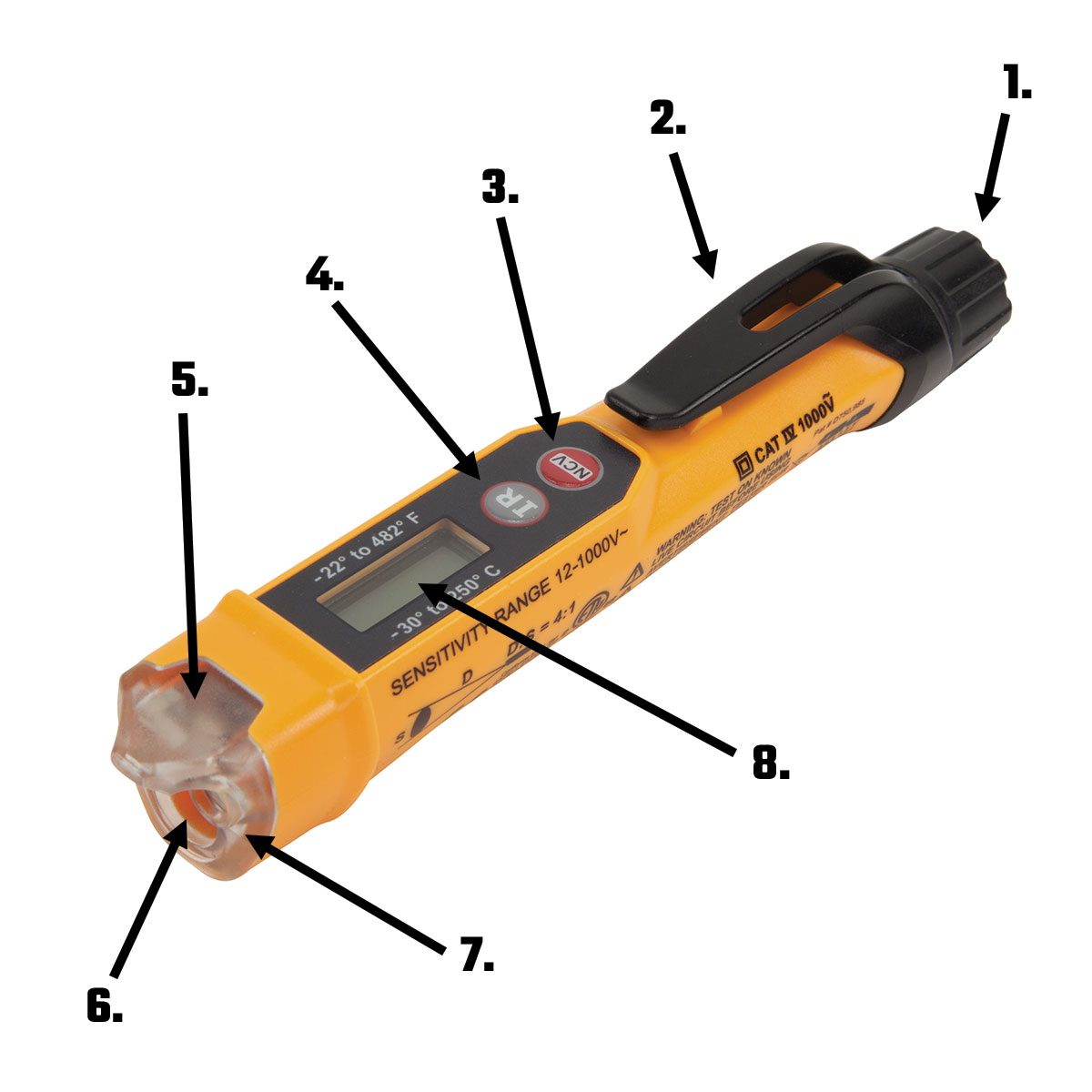Toolipedia: Non-Contact Voltage Detector


What is a non-contact voltage detector?
A non-contact voltage detector is a device that can detect the presence or an electrical charge in a wire, cable, or piece of equipment without having to touch the object. Voltage detectors are primarily used by electricians and electrical technicians. They help confirm that an electrical circuit is turned off, so repairs can be made safely. Voltage detectors are also used to locate or troubleshoot faulty wiring and equipment. Most non-contact voltage detectors resemble a thick pen, and many have additional features like flashlights and infrared (IR) laser thermometers. Here are the basic components of a non-contact voltage detector:
- Battery Cap
- Pocket clip
- Voltage detection power button
- IR thermometer power button
- Non-contact, illuminating, voltage detection tip/sensor
- IR thermometer sensor
- Laser pointer
- LCD screen (For IR)
- (Flashlight not shown)
How is a non-contact voltage detector used?
When the device is turned on and held (within an inch or so) next to an electrical charge, a light will flash, and a warning chirp or beep will sound.
What are the different types of non-contact voltage detectors?
Most non-contact voltage detectors have a similar appearance and operate basically the same way. The biggest differences will be found in the additional options like, IR thermometers, flashlights, etc.
What makes a good non-contact voltage detector?
- Ability to detect low and high voltage
- Both sound and light warnings
- Ability to toggle sound warning off comes in handy when working in environments like offices where people are working
- Strong light that can be seen on a sunny day
- Auto off to save batteries
- Water resistant
- Bright color so you don’t lose it
- Rechargeable batteries
- Narrow tips fit in receptacles and can be more accurate when checking numerous wires.
Klein Tools makes a high-quality detector.
Non-contact voltage detector tip:
Always test that a voltage detector is working properly on a circuit that you know is “live” before confirming the circuit you’re working on is powered down.

No comments